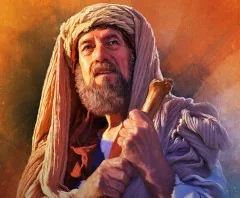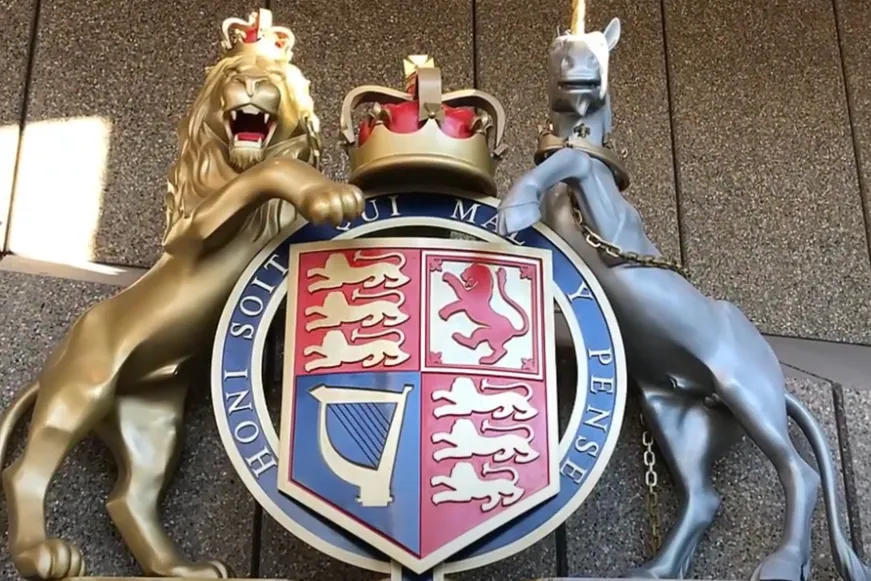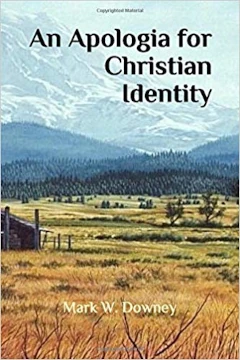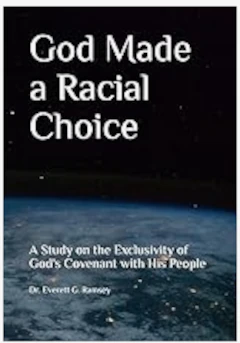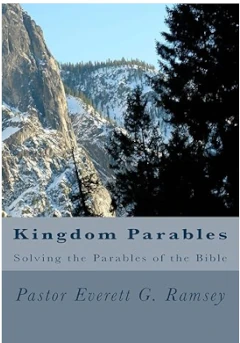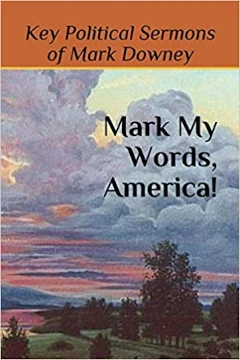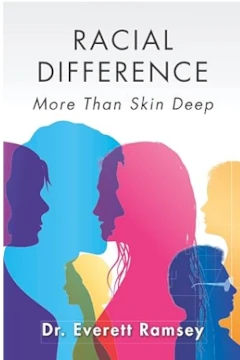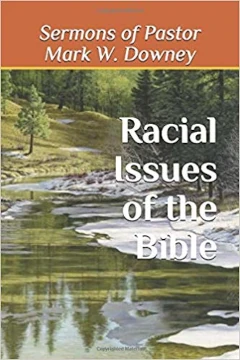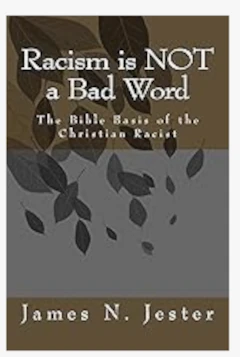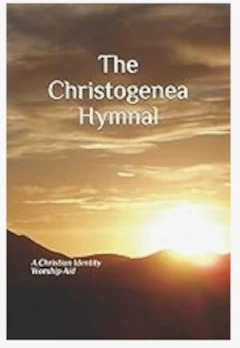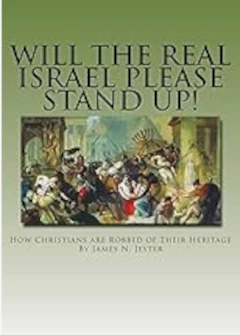Who Chooses? Part 5
Compiled from the sermon notes of Pastor Don Elmore
June 25, 2017
Scripture Reading: Ezekiel 8:13-18:
13) “He [the LORD God] said also unto me [Ezekiel], Turn thee yet again, and thou shalt see greater abominations that they [people of the kingdom of Judah] do.
14) Then He brought me to the door of the gate of the LORD’S house which was toward the north; and behold there sat women [of the Kingdom of Judah] weeping for Tammuz.
15) Then said He unto me, Hast thou seen this, O son of man? Turn thee yet again, and thou shalt see greater abominations than these.
16) And He brought me into the inner court of the LORD’S house, and, behold, at the door of the temple of the LORD, between the porch and the altar, were about five and twenty men, with their backs toward the temple of the LORD, and their faces toward the east; and they [25 men of the Kingdom of Judah] worshipped the sun toward the east.
17) The He said unto me, Hast thou seen this, O son of man? Is it a light thing in the house of Judah that they commit the abominations which they commit here? For they have filled the land with violence, and have returned to provoke me to anger; and, lo, they put the branch to their nose.
18) Therefore will I also deal in fury: mine eye shall not spare, neither will I have pity: and though they cry in mine ears with a loud voice, yet will I not hear them.”
Ezekiel was shown some terrible religious abominations that the people of the Kingdom of Judah were committing against their God. The women were “weeping for Tammuz” and 25 men were having a sunrise service in the inner court of the temple. Then Ezekiel is asked a question: “Is it a light thing”? God then tells Ezekiel that He would deal in fury: “though they cry to Mine ears with a loud voice, yet will I not hear them.”
What a judgment. The God of Judah was surely provoked greatly. He would not hear their cries that they made with their loud voices…He would not hear them.
Is this like what has happened in recent times to the descendants of the ancient Israelites? What about the United States right before the War Between the States? Did this happen once again? I believe that it had, and the judgment was what God said it would be. And it has increased more and more over the years.
ROMAN CATHOLIC BEAST SYSTEM BEGINS ITS INFLUENCE
When the colonies began their existence, the Roman Catholics and the Jews were two of the main religious groups that the Protestant colonies were not tolerant of. These two groups of anti-Christs were not allowed to vote, be on the jury or hold office. Many were discouraged from coming here at all.
But they did come. In 1790, the national census showed that out of around 4 million inhabitants, the Roman Catholics were fewer than 65,000 (1.6% of the population). The most populated state of Catholics was Maryland. The Jews were less than 3,000 inhabitants at the founding of our nation.
By 1860, the Jews were less than 200,000 in population while the Roman Catholics numbered a little over 3 million. The Jews were the descendants of the murderers of Jesus the Christ and had an inbred hatred of all that He stood for—including those who followed Him. Roman Catholics or Papists had ruled over the Protestants for centuries in Europe before the Revolution. The Protestants called the Romanists the “Great Whore” of the book of Revelation.
And there was a third group who had a major negative influence on the people of Christian America, which was the result of the Napoleonic Wars. It began on the island of Haiti where there was a disastrous slave revolt that drove out their French plantation owners, eventually killing most who stayed except for those who interracially married with the black slaves.
Both French Roman Catholic white plantation owners, and many free blacks as well as former black slaves, fled to the French settlement of New Orleans for safety. But most of them spoke French, of course, and were entirely different from the English led people who were the founders of the original United States. Louisiana was the first land outside of the original United States that applied for statehood. They achieved this after much arguing in Congress in 1812.
The blacks merged their religion from West Africa with the Roman Catholic religion—it was called voodoo. True voodoo rituals were much more exotic and secretive and focused on the religious and ritualistic aspect, while the voodoo in Congo Square in New Orleans was predominantly a form of entertainment and a celebration of African culture. Some of the dances and types of music heard in Congo Square were the result of these voodoo ceremonies.
Voodoo came to New Orleans not only as a result of the Haitian Revolution—when droves of refugees, both white and black, flocked to New Orleans in the early 1800s bringing the primary popular religion of Haiti with them—but far earlier in the city’s history with the arrival of enslaved Africans in the 1700s.
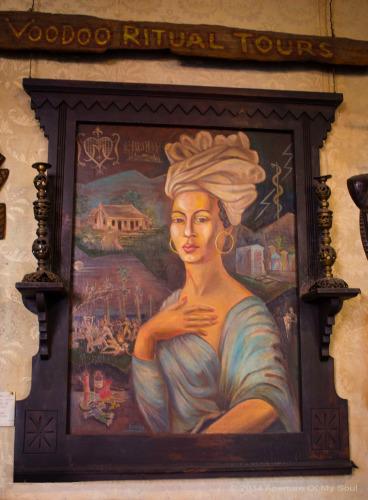 Marie Laveau, the first and most powerful voodoo queen, is one of the most well-known practitioners of voodoo in Congo Square. In the 1830s, Marie Laveau led voodoo dances in Congo Square and held darker, more covert rituals along the banks of Lake Pontchartrain and St. John’s Bayou.
Marie Laveau, the first and most powerful voodoo queen, is one of the most well-known practitioners of voodoo in Congo Square. In the 1830s, Marie Laveau led voodoo dances in Congo Square and held darker, more covert rituals along the banks of Lake Pontchartrain and St. John’s Bayou.
The tomb of legendary voodoo queen Marie Laveau in St. Louis Cemetery is a popular, year-round haunt for visitors, but every June, the summer solstice provides an opportunity for additional exploration of the African-Haitian religion that has become synonymous with New Orleans. With the solstice comes the annual voodoo head washing ceremony along Bayou St. John where Laveau once practiced. Held on St. John’s Eve (June 23), including last Friday, on the bayou’s Magnolia footbridge, the baptism and cleansing ritual is led by modern-day high priestess Sallie Ann Glassman. Wearing all white, participants invoke the spirit of Laveau as the sun sets, hoping to cleanse negative energy and be blessed with a successful year. Rhythmic drumming and dancing go late into the night.
Voodoo believes that God is retired and He relies on spirits to intervene in the lives of people. New Orleans Voodoo calls upon ancestral spirits for help in life matters. The slaves practiced some Voodoo rituals openly in Congo Square, an area just outside the city of New Orleans. Slaves would gather, sing, and dance on Sundays. When the slave trade was outlawed, the African influence became lost in a generation. This gave transition from the African Phase to the Creole Phase of voodoo.
Marie Laveau remained the Voodoo Queen of New Orleans for at least 40 years. She practiced her spiritual rituals with a snake behind her home and on St John’s Day, June 23rd, at Bayou St John. She intimidated police and could change the outcomes of court cases. It was not certain if all her abilities were magical or from blackmail and coercion. Her beauty and presence brought a popular face to voodoo.
Marie Laveau mixed Creole Catholicism with Voodoo. Influenced by Catholic traditions, both entreat the help from spirits. Voodoo spirits were alternately given the names of Saints in the Catholic church. She always encouraged her followers to thank god and the spirits for their help and not herself. Marie was known for her hospitality and compassion. She was instrumental in helping the sick during the Yellow Fever epidemic. She helped all those who came to her door on St. Ann Street with a sincere request.
Her legend is still the face of New Orleans voodoo. Tourists and locals visit Marie’s tomb to leave gifts and ask for her help in their life matters. Legend says that once a request is made of Marie, offering a piece of pound cake to the statue of St. Expedite at St. Jude’s church across the street, will bring you a speedy answer. St. Expedite is the spirit thought to stand between life and death.
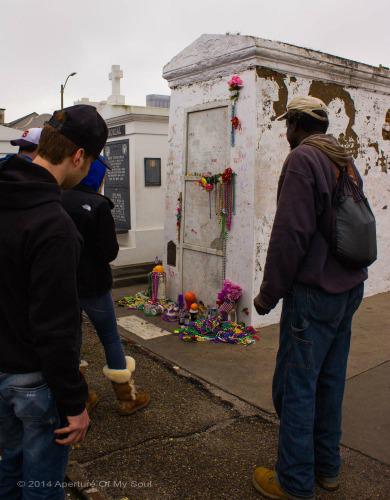 As far as Catholicism goes, the Church has been the largest denomination in the United States since 1850 because of the massive waves of Irish—and then German, Italian, Polish, Hungarian, and Latin American—immigration that began hitting the shores of New York and Massachusetts in the 1830s. Indeed, between 1830 and 1860, the Catholic population in the United States grew by more than 900 percent, and by the outbreak of hostilities between the North and the South in April 1861, there were more Catholics living in the Diocese of Boston alone than there were in all eleven states that would ultimately secede from the Union, plus Maryland—the state that was home to the oldest diocese in the United States and had been the epicenter of English-speaking American Catholicism for more than 200 years.
As far as Catholicism goes, the Church has been the largest denomination in the United States since 1850 because of the massive waves of Irish—and then German, Italian, Polish, Hungarian, and Latin American—immigration that began hitting the shores of New York and Massachusetts in the 1830s. Indeed, between 1830 and 1860, the Catholic population in the United States grew by more than 900 percent, and by the outbreak of hostilities between the North and the South in April 1861, there were more Catholics living in the Diocese of Boston alone than there were in all eleven states that would ultimately secede from the Union, plus Maryland—the state that was home to the oldest diocese in the United States and had been the epicenter of English-speaking American Catholicism for more than 200 years.
Immigration to cities like New York, Boston, Cincinnati, and Chicago was the driving force behind the growth of the Catholic Church in America in the nineteenth and early twentieth centuries. It is not surprising, then, that so much of the scholarship on American Catholic history has focused on urban centers in the Northeast and Midwest—and on the process of “Americanization” that Catholicism experienced following its nineteenth-century incarnation as an immigrant church.
Anti-Catholicism in the United States reached a peak in the 1850s when some Protestant leaders became alarmed by the influx of Catholic immigrants. Preachers echoed the Protestant Reformation of 400 years before by calling the Catholic Church the Whore of Babylon in the Book of Revelation.
Mardi Gras is closely related to the celebration of what was called “Carnival”. Hundreds and hundreds of years ago, the followers of the Catholic religion in Italy started the tradition of holding a wild costume festival right before the first day of Lent. Because Catholics are not supposed to eat meat during Lent, they called their festival, carnevale—which means “to put away the meat.” As time passed, carnivals in Italy became quite famous; and in fact, the practice spread to France, Spain, and all the Catholic countries in Europe. Then as the French, Spanish, and Portuguese began to take control of the Americas and other parts of the world, they brought with them their tradition of celebrating “carnival”.
Mardi Gras (Fat Tuesday) is believed to have arrived in North America on March 3, 1699, when the French-Canadian explorer Pierre Le Moyne d’Iberville camped about 60 miles downriver from the future site of New Orleans. Knowing it was Fat Tuesday back in France, Iberville named the spot Point du Mardi Gras and held a small gala. A few years later, French soldiers and settlers feasted and wore masks as part of Mardi Gras festivities in the newly founded city of Mobile (present-day Alabama). 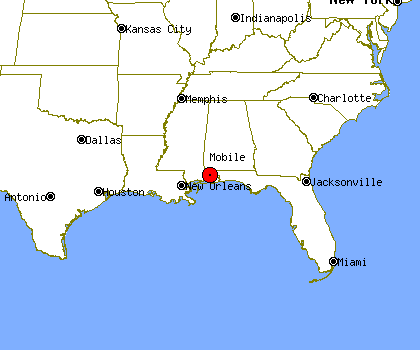 To this day, Mobile claims to have the oldest annual Mardi Gras celebration in the United States.
To this day, Mobile claims to have the oldest annual Mardi Gras celebration in the United States.
The next day after “Fat Tuesday” was “Ash Wednesday.” That was when the Catholics had done all their sins that they wanted to commit on Tuesday, and then they went to their priest to confess them, and he put a cross on their forehead made from ashes on Wednesday.
Ash Wednesday, a day of fasting, is the first day of Lent in Western Christianity. It occurs 46 days (40 fasting days, if the six Sundays, which are not days of fast, are excluded) before Easter and can fall as early as February 4 or as late as March 10. Ash Wednesday is observed by many Western apostate Christians, including Anglicans, Lutherans, Methodists, Presbyterians, and Roman Catholics.
According to the canonical gospels of Matthew, Mark and Luke, Jesus Christ spent 40 days fasting in the desert, where he endured temptation by Satan. Lent originated as a mirroring of this, or was it forty days of Tammuz’s death set aside as fasting 40 days as preparation for Easter?
Let’s review from part one: Semiramis became known as “Isis” or “Ishtar” which is now pronounced “Easter”, and her moon egg became known as an “Easter egg.” Ishtar soon became pregnant and claimed that it was the rays of the sun-god Baal that caused her to conceive. The son that she brought forth was named Tammuz, the reincarnated Nimrod.
 Tammuz was noted to be especially fond of rabbits, and they became sacred in the ancient religion because Tammuz was believed to be the reincarnated son of the sun-god, Baal. Tammuz, like his supposed father, also became a mighty hunter.
Tammuz was noted to be especially fond of rabbits, and they became sacred in the ancient religion because Tammuz was believed to be the reincarnated son of the sun-god, Baal. Tammuz, like his supposed father, also became a mighty hunter.
One day, Tammuz was killed by a wild pig. Queen Semiramis (Ishtar or Easter) informed the people of Babylon that Tammuz was now ascended to his father, Nimrod (Baal), and that the two of them would be with the worshippers in the sacred candle or lamp flame as Father and Son.
Semiramis (Ishtar) was now worshipped as the “Mother of God” and “Queen of Heaven.” She continued to build upon her mystery religion:
- The Queen told her worshippers that when Tammuz was killed by the wild pig, some of the victim’s blood fell on the stump of an evergreen tree, and the stump grew into a full new tree overnight. This made the evergreen tree sacred (Christmas tree) by the blood of Tammuz.
- She also proclaimed a forty-day period of sorrow (Lent) each year prior to the anniversary of the death of Tammuz, one day for each year that Tammuz lived. He died when he was forty years old.
- They (Roman Catholic Church and her daughters) sponsored a sun-rise service to welcome the sun’s rise on Easter morning.
- Ishtar also proclaimed that because Tammuz was killed by a pig, the swine (Easter ham dinner) must be eaten on that Sunday. The pig (swine) is a forbidden animal for God’s people to eat (Leviticus 11:7, and Deuteronomy 14:8).
Wasn’t that exactly what God said to Ezekiel in our introductory verses? The Kingdom of Judah was guilty of celebrating Lent and the rising of the sun in the Tammuz—Baal celebrations that made God so angry. And isn’t America doing the same thing? When did they begin doing it? I believe it was right before the War Between the States.
ROMAN CATHOLICS BEGIN THEIR CELEBRATION OF MARDI GRAS
Mardi Gras got going in New Orleans soon after the city’s founding in 1718. The Spanish, who ruled the city from 1762 to 1800, apparently cracked down on certain Mardi Gras rituals (though documentation from that period is scarce). United States authorities did much the same after taking control in 1803, banning both masked balls and public disguises. Nonetheless, they eventually accepted the festival’s existence.
King Napoleon of France gained control of New Orleans from Spain and then sold it to America in 1803. Most of the inhabitants were French speaking and many were both the wealthy French plantation owners and former slaves from Haiti. The first recorded Mardi Gras street parade in New Orleans took place in 1837, by which time the city had transformed from a small backwater town into a major metropolis.
Twenty years later, six men organized a secret society called the Mystick Krewe of Comus. By holding a parade with the theme of “The Demon Actors in Milton’s Paradise Lost,” along with a lavish grand ball, the false god, Comus, reversed the declining popularity of Mardi Gras and helped establish New Orleans as its clear epicenter in the United States.
Here are a few questions for you:
- Can you name three of the famous six men who were members of the Mystick Krewe of Comus who organized the Mardi Gras parade?
- Can you name the three largest cities in the North and South in 1860?
- Do you know the population of Cincinnati and Atlanta in 1860?
- And if you count all the students, teachers and staff in the present Boone County School System in Kentucky what place would that place them if they were ranked in the largest cities of the South in 1860.
Look here for the answers:
What were the largest cities in the What were the largest cities in the NORTH in 1860, just prior to the SOUTH in 1860, just prior to the outbreak of the War Between the outbreak of the War Between the States? States?
| Largest city in the North | Population | Largest city in the South | Population |
| New York City, NY | 565,529 | New Orleans, LA | 168,675 |
| Philadelphia, PA | 565,529 | Charleston, SC | 40,522 |
| Brooklyn, NY | 266,661 | Richmond, VA | 37,910 |
| Baltimore, MD | 212,418 | Memphis, TN | 22,623 |
| Boston, MA | 177,840 | 5. Savannah, GA | 22,292 |
| Cincinnati, OH | 161,044 | Petersburg. VA | 18,266 |
| St. Louis, IL | 160,773 | Nashville, TN | 16,988 |
| Chicago, IL | 112,172 | Norfolk, VA | 14,620 |
| Buffalo, NY | 81,129 | Wheeling, VA | 14,082 |
| Newark, NJ | 71,941 | Alexandria, VA | 12,652 |
And the population of Atlanta, GA was less than 9,600 inhabitants when the war began. It was the 99th largest city in the United States in 1860 and the 14th largest Southern state. Boone County Schools in Kentucky has 17,500 students with a staff of 2600, so its superintendent would be over an institution that would have been equal to the 6th largest city in the South. Atlanta was the 14th largest city in the South in 1860.
The North held the lead in the population of its cities compared to the cities in the South. They had about 7 to 3 leads in population. New York City had about 650,000 more inhabitants than the South’s largest city, New Orleans. The tenth largest city of the North had about 50,000 more residents than the South’s tenth largest, Alexandra. The South was predominately a rural area while the north was more urban.
The largest city in the rural South was New Orleans, Louisiana. It was the sixth largest city in the United States, just a little bit larger than Cincinnati.
But New Orleans was more than four times larger than the second largest city in the southern portion of the United States--Charleston, South Carolina. And these two largest cities in the South were where many of the Jewish inhabitants lived and where the secret societies had many of their lodges. New Orleans also had a lot of French refugees who fled the Haiti Rebellion in 1791-1804.
In 1857, four years before the outbreak of the war, six men organized a secret society which turned Mardi Gras around from its declining popularity to its massive parades and debauchery. The secret organization was called the Mystick Krewe Comus.
Judah Benjamin (a Jew) was one of the three founders of the secret organization known as the Mystick Krewe of Comus. These other two famous founders, along with Judah were:
- Judah Benjamin, born in the Virgin Islands
- Albert Pike, born in Boston, Massachusetts
- John Slidell, born in New York city
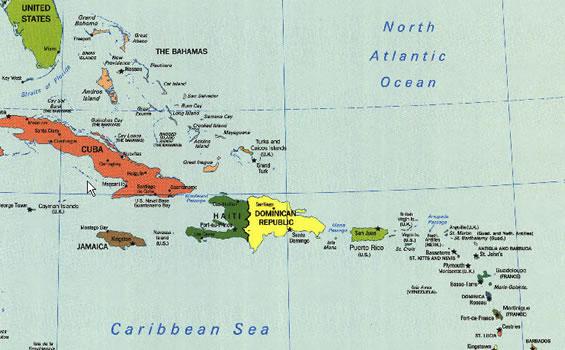 Two were born in the North and one, Judah Benjamin, was born in the Caribbean Islands close to Puerto Rico. The Island was owned by the British. When Judah was a young boy, he came to America with his family and lived in both North and South Carolina.
Two were born in the North and one, Judah Benjamin, was born in the Caribbean Islands close to Puerto Rico. The Island was owned by the British. When Judah was a young boy, he came to America with his family and lived in both North and South Carolina.
Judah Benjamin was born in the Virgin Islands and he married a girl whose family came from the Haitan revolution.
What we have today is a churchy world and a worldly church! In French, Mardi Gras means Fat Tuesday. This is a day to gorge and over indulge oneself before the seasonal religious practice of fasting, abstinence and denial. It is not surprising that the symbol for Mardi Gras is the “Bouef Gras” ... The fattened bull.; homosexuality, pornography, idolatry, and every other form of sin imaginable. They even display a Golden Calf for people to adore and worship.
WHO WAS THE FALSE GOD COMUS?
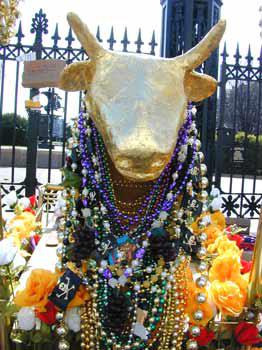 In Greek mythology, Comus is the god of festivity, revels and nocturnal dalliances. He is a son and a cup-bearer of the god Dionysus. Comus represents anarchy and chaos. His mythology occurs in the later times of antiquity. During his festivals in Ancient Greece, men and women exchanged clothes. He was depicted as a young man on the point of unconsciousness from drink. He had a wreath of flowers on his head and carried a torch that was in the process of being dropped. Unlike the purely carnal Pan or purely intoxicated Dionysus, Comus was a god of excess.
In Greek mythology, Comus is the god of festivity, revels and nocturnal dalliances. He is a son and a cup-bearer of the god Dionysus. Comus represents anarchy and chaos. His mythology occurs in the later times of antiquity. During his festivals in Ancient Greece, men and women exchanged clothes. He was depicted as a young man on the point of unconsciousness from drink. He had a wreath of flowers on his head and carried a torch that was in the process of being dropped. Unlike the purely carnal Pan or purely intoxicated Dionysus, Comus was a god of excess.
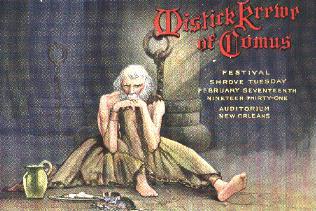 The Mystick Krewe Comus was the first Carnival organization to stage a formal parade. It lasted until 1992, when the Comus parade was the last parade to roll on Mardi Gras night, closing out the season for the people on the streets and ushering in the forty lean days of Lent. Comus no longer holds parades, but it continues to hold its ball on the final evening of Mardi Gras.
The Mystick Krewe Comus was the first Carnival organization to stage a formal parade. It lasted until 1992, when the Comus parade was the last parade to roll on Mardi Gras night, closing out the season for the people on the streets and ushering in the forty lean days of Lent. Comus no longer holds parades, but it continues to hold its ball on the final evening of Mardi Gras.
New Orleans was the wealthiest city in America in the time right before the War Between the States. Drawn by the rich cotton and sugar plantations, abundant trade and thriving port, Americans came seeking their fortunes. From the city’s earliest days, New Orleans had close ties to the money centers of New York, Boston, Philadelphia in the northern portion of the United States and with London located in England and Paris in France. The House of Rothschild’s English bankers began living full time in New Orleans in the early 1800s.
In 1857, the Jew, Judah Benjamin, was an agent of the House of Rothschild living in New Orleans. His job was to fund the Confederacy and help foster a devastating Civil War. Judah Benjamin started in the Confederate government as Attorney General and later became Secretary of War and then Secretary of State. He also became the head of the Confederate intelligence and is believed by some to have been a key player in the assassination of Abraham Lincoln.
While Judah was living in New Orleans, the House of Rothschild was fearful that the new United States Republic would begin printing its own money and have a central bank not tied into the House of Rothschild. This would weaken the House of Rothschild’s control over the monetary currencies of the world.
In 1832, William Russell, whose family fortunes were made smuggling opium to China through Turkey, founded a chapter of the House of Rothschild’s Illuminati--Knights of Templar at Yale University and called it “Skull and Bones”. Code numbers are important as a form of identification and communication to the upper echelon within this secret elitist society. Three is a key number. The number 33 is a passage into one of the highest stages of membership within this secret elitist group. The number 13 is a form of identification among these elitists. The Southern battle flag had 13 stars, while only 11 states were part of that nation.
- The first chapter of “Skull and Bones” was founded in Germany
- The second Chapter is at Yale University in New Haven, Connecticut
- The third chapter was to eventually be founded, when the time was right, at Tulane University School of Medicine located in New Orleans, Louisiana
All the doctors involved in the founding of the Tulane University Skull and Bones were secret members of the New Orleans Mystick Krewe of Comus. They had all pledged themselves to blood oaths of secrecy and were committed to the Illuminati’s plan for a New World Order. Dr. Rudolph Matas was to play a very special role in the Huey P. Long assassination.
William Russell had a key partner by the name of Caleb Cushing. Caleb Cushing dispatched Albert Pike to Arkansas and later to Louisiana. Albert Pike’s mission was to further the cause of slavery, to foster a United States civil war, and to establish a line of communication with other fellow Illuminati. Albert Pike founded the Knights of the Golden Circle. He was chosen by Caleb Cushing to head an Illuminati branch in New Orleans and to establish a New World order. Albert Pike moved his law office to New Orleans in 1853 and was made Masonic Special Deputy of the Supreme Council of Louisiana on April 25, 1857.
Let’s stop and consider a few things. Who did Robert E. Lee marry? Answer: The granddaughter of George Washington. What was the relation between John Slidell’s daughter, his wife’s sisters, his wife’s sister daughter and two of his closest friends. Who did they marry?
------------------------------------------------------
Part of John Slidell’s Family & Friends
John Slidell – Mathilde Deslonde Slidell
Matthew Calbraith Perry -- Jane Slidell Perry [John Slidell was Jane’s brother-in-law]
P. G. T. Beauregard – Marguerite Caroline Deslonde3 (2nd wife)
[John Slidell was Marguerite’s brother-in-law]
Frederic d’Erlanger – Marguerite Mathilde Slidell d’Erlanger
[John Slidell was Marguerite’s father]
August Belmont – Caroline Slidell Perry Belmont
[John Slidell was Caroline’s uncle]
Judah P. Benjamin -- Natalie St. Martin 4 (parents escaped
from Haiti in the Rebellion of 1791.)
Albert Pike – Mary Ann Hamilton2
------------------------------------------------------
Mathilde Deslonde Slidell (1815–70) was born into a distinguished French family in New Orleans, Louisiana. Mathilde was born to one of the wealthiest and grandest plantation owners in Belle Point, St. John the Baptist Parish, Louisiana. She attended a private School in New York, where she became friends with John Slidell’s sister, Jane.
It was there that she met John. She married John Slidell, a United States senator and a Confederate diplomat, in 1835. John Slidell is best remembered for his involvement in the Trent affair, which nearly caused war to break out between the United States and Great Britain. Slidell and James Murray Mason were Confederate emissaries who were on their way to France in late 1861 on the British ship Trent. A Union ship, the San Jacinto, intercepted the Trent and returned the men to Boston Harbor, where they were imprisoned. They could continue to Europe after the British threatened war over this act against a British ship on the high seas. Mrs. Slidell was with her husband on this voyage
Albert Pike met well-to-do Mary Ann Hamilton of Little Rock, Arkansas and married her on November 28, 1834, and they had six children. With the help of his wife’s money, Pike bought a share of the Arkansas Advocate and the following year became the sole owner. He sold the newspaper soon after entering the law profession in 1837.
Within a few years he was regarded as one of the most capable attorneys in the Southwest and became the first reporter of the Arkansas Supreme Court. As a staunch Whig and later a Know-Nothing, he championed many internal-improvements causes against the Democratic majority in Arkansas.
Ten years after his first wide died, the widower P. G. T. Beauregard married Marguerite Caroline Deslonde, the daughter of André Deslonde, a sugar cane planter from St. John the Baptist Parish. Caroline was a sister-in-law of John Slidell, a Louisiana U.S. Senator and later a Confederate diplomat.
Beauregard married his first wife who was Marie Antoinette Laure Villere who was from the most prominent French Creole families in southern Louisiana. She died in New Orleans in March 1864, when it was under Union occupation. They had no children together.
- Judah Benjamin married Natalie St. Martin whose family had fled the Haitian slave revolt of 1791 for New Orleans. Benjamin had married Natalie in 1833, when he was 21 and she just 16.
Inspired by the Napoleon War in Europe, the former slave Toussaint l’Overture, led the slaves in rebelling against the planters on August 21, 1791. By 1792 they controlled a third of the Haitian island. Despite reinforcements from France, the area of the colony held by the rebels grew as did the violence on both sides. Before the fighting ended 100,000 of the 500,000 blacks and 24,000 of the 40,000 whites were killed. Nonetheless the former slaves managed to stave off both the French forces and the British who arrived in 1793 to conquer the colony, and who withdrew in 1798 after a series of defeats by l’Overture’s forces. By 1801 l’Overture expanded the revolution beyond Haiti, conquering the neighboring Spanish colony of Santo Domingo (present-day Dominican Republic).
By the end of April 1804, some 3,000 to 5,000 persons had been killed practically eradicating the country’s white population. Haiti was the most prosperous of France’s islands in the Caribbean pre-revolution; now it is the poorest of all governments in practically the whole world, post-revolution.
CONCLUSION
John Slidell, Judah Benjamin and Albert Pike were all leaders of the Confederacy and were members of the secret society Mystick Kreme Comus which was the organizer of the Mardi Gras in New Orleans in 1857. John Slidell, Commodore Perry, Emily d’Elanger(?), August Belmont, Judah Benjamin, P. G. T. Beauregard and Albert Pike were also all freemasons. So was the president of the South, Jefferson Davis, and General Stonewall Jackson; two of the three men carved in Stone Mountain in Georgia.
Four of the men were married to a relative of Slidell’s wife and two of his friends were married to very wealthy women of their times. Most, if not all, celebrated Mardi Gras and possibly even dabbled in Voodoo.
Our American school children have been taught that the Civil War was fought over the slavery problem, but this was only a surface issue to hide the intrigue of the “Great Red Dragon” to foment one side against the other. After thousands of our choice White Israel sons were murdered, our God stopped the slaughter of the Dragon: By the intervention of the Czar of Russia, who God sent to our national rescue, but this action of Russia is still unknown to most Americans.
The kingdom of Judah worshiped other gods. Is America following in their footsteps? America is now worshipping the calendar of Rome, and has allowed Buddhists, Jews, Voodooists, Muslims and a whole host of others the tolerance to worship the way that they feel is correct. There is only one religion that is not tolerated. Guess which one.
God chooses, not man.
Blessed be the LORD God of Israel.
To be continued.

